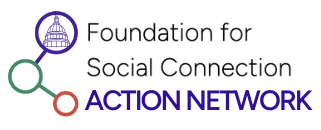I’m finding it very hard to focus today. Do you feel the same?
It’s 21 weeks into the year and America has already seen 213 mass shootings.
I keep looking at my phone, reading the next headline, the next tweet, looking at the faces of the victims… wondering if this is what I have in store for my life and if I will lose my future children to gun violence. Tears come and go as I return to my inbox.
I still remember vividly, marching down the Washington Mall on March 24th, 2018, during the March For Our Lives and feeling a sense of hope and a sense of change, wholly impressed that our nation had come together on this cause. I fear I was mistaken and naïve, as I see history continues to repeat itself while I grow more angry, helpless, sad, and numb, all at once by these tragedies.
As someone trained in and affecting public health programs, I can’t help but feel a collective failing.
The first time I truly reflected on the duty of the public health field, including public health officials and politicians charged with protecting those they serve, was in the aftermath of Hurricane Katrina. While I had just become a teenager, I was keenly aware that the devastation, displacement, and fear of those impacted would require a coordinated emergency disaster response. They didn’t get one. I also started to ponder on the word prevention – what actions can we take to avoid the manifestation of a disaster condition? Understanding natural disasters occur, how can we better set up systems to protect our citizens?
Gun violence is a disaster AND we can prevent it.
The Johns Hopkins Center for Gun Violence Solutions reported that in 2020 guns became the leading cause of death for children and teens in the United States. Sit with that a moment… Additionally the CDC reported that Hispanic children and teens are 2x more likely to become victims of firearm homicide (Source). The horrific events of this week’s mass shooting in Uvalde, TX smack these stats in our faces.
I learned today that 18-20-year-olds are among the highest risk to commit violence with firearms. In most states, the ability to purchase these deadly weapons is less restricting than the ability to purchase a Bud Light (Source). Yes, our laws and lawmakers are failing us, but I can’t help but connect the dots between this statistic and the fact that Gen Z (ages 10-25) report the highest rates of loneliness in our country (Source). In his book The Second Mountain, author David Brooks wrote, “These mass killings are about many things – guns, demagoguery, and the rest – but they are also about social isolation and the spreading derangement of the American mind. Whenever there’s a shooting, there’s always a lonely man who fell through the cracks of society, who lived a life of solitary disappointment and who one day decided to try to make a blood-drenched leap from insignificance to infamy.”
Key word: TRY; To me they will never be infamous.
So, while we keep pushing those in positions of power to enact policies to protect us and our youth, I challenge us to think about additional routes of prevention – What can we do to reach lonely individuals before they fall prey to violence as an answer for easing pain? Can we build positive social systems in communities where we value others first, before ourselves?
In his critical book, Together: Why Social Connection Holds the Key to Better Health, Higher Performance, and Greater Happiness, U.S. Surgeon General Dr. Vivek Murthy writes, “Being connected to others gives us a stake in more than our own interests. It expands those interests to include our whole community and thus increases our motivation to work together.” (Source)
I can’t focus today, so I’ll keep asking myself the hard questions. I’ll make a short list of new potential partners to reach out to and learn more about this issue. I’ll hug my loved ones tighter the next time I see them, and say a prayer for those hurting, knowing that it is not nearly enough.
What will you commit to?
— Jillian Racoosin, Deputy Executive Director, Coalition to End Social Isolation & Loneliness, Foundation for Social Connection
Please note I am not an expert on this topic, and my opinions are my own. For more information here are some great resources:
· Johns Hopkins Center for Gun Violence Solutions: https://publichealth.jhu.edu/sites/default/files/2022-05/2020-gun-deaths-in-the-us-4-28-2022-b.pdf ; https://publichealth.jhu.edu/departments/health-policy-and-management/research-and-practice/center-for-gun-violence-solutions
· Prevention Institute: https://www.preventioninstitute.org/focusareas/preventing-violence-and-reducing-injury/preventing-violence-advocacy
· Everytown for Gun Safety: https://www.everytown.org/
· American Academy of Family Physicians: https://www.aafp.org/about/policies/all/gun-violence.html
· Sandy Hook Promise: https://www.sandyhookpromise.org/take-action/volunteer/
· ACTNow for Mental Health: https://www.anmh.info/
· Foundation for Social Connection: https://www.social-connection.org/

